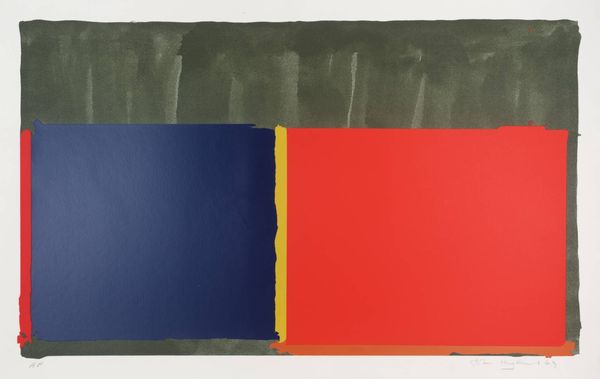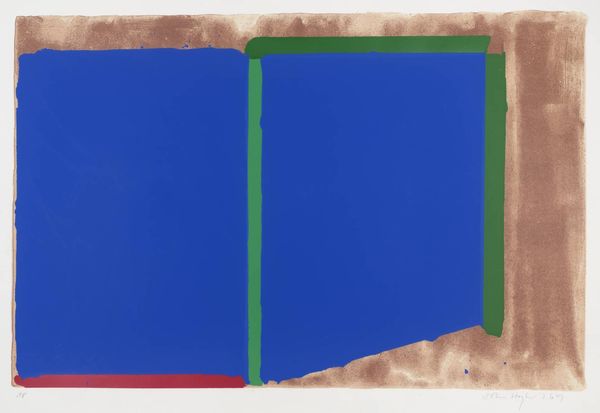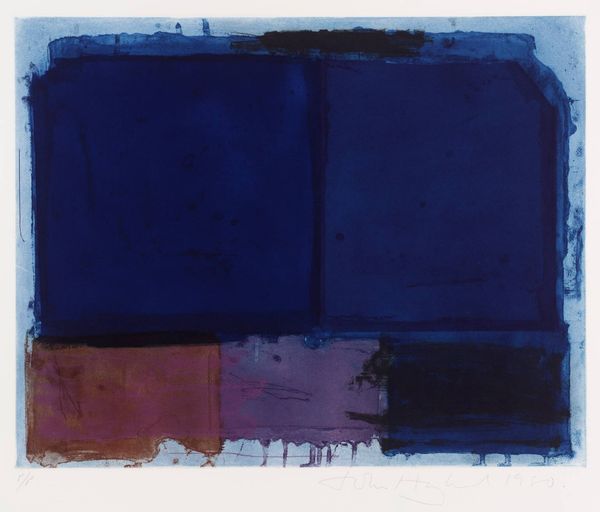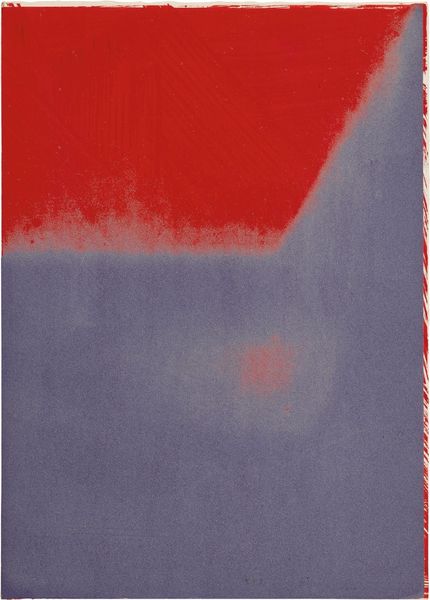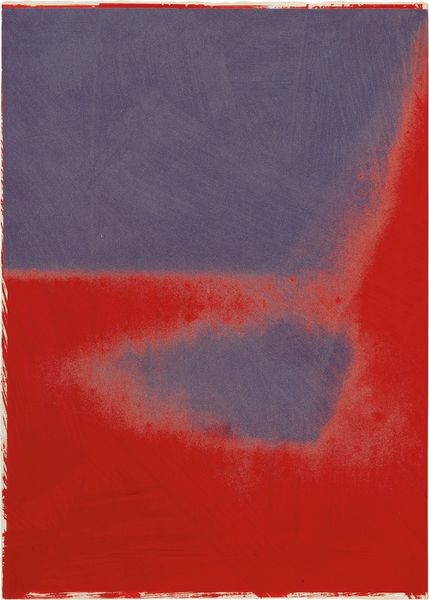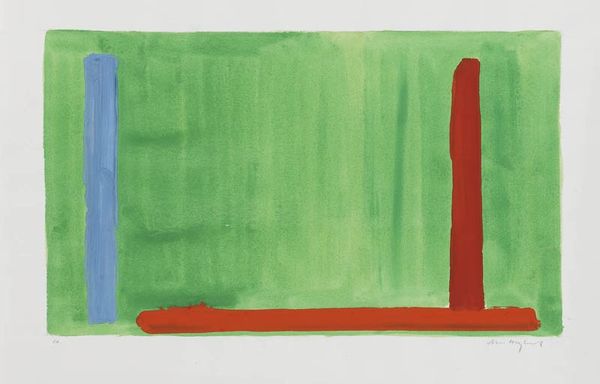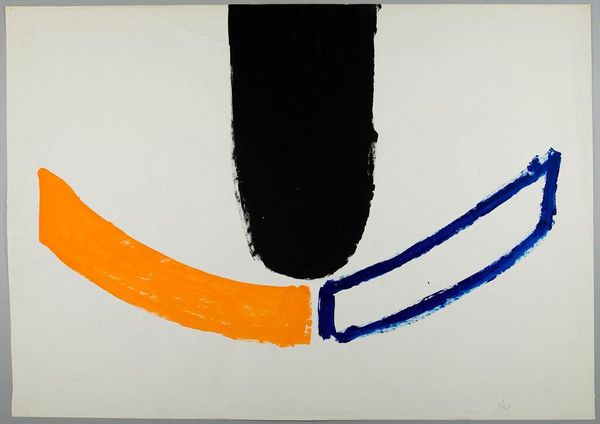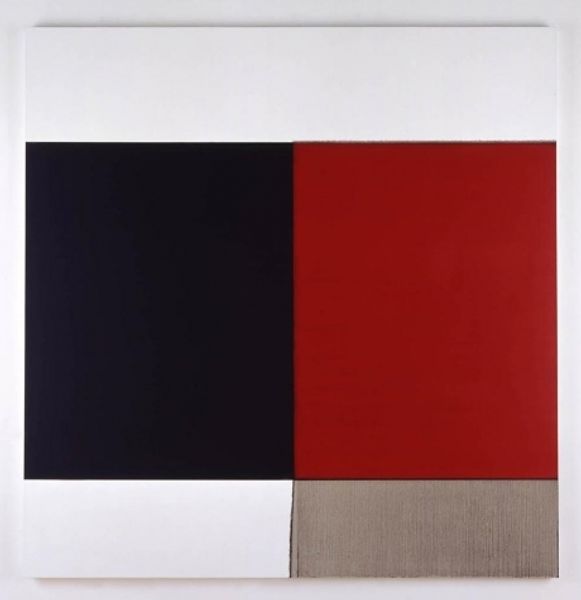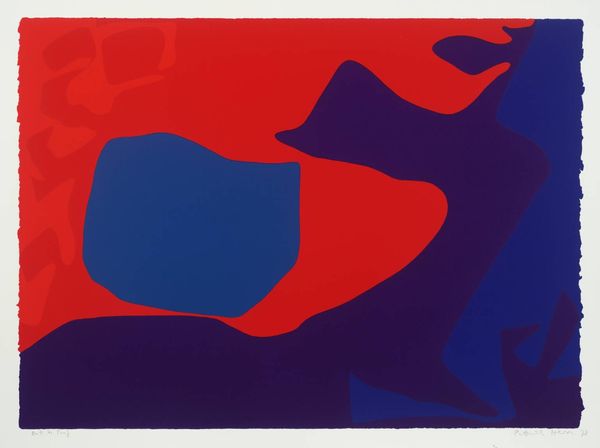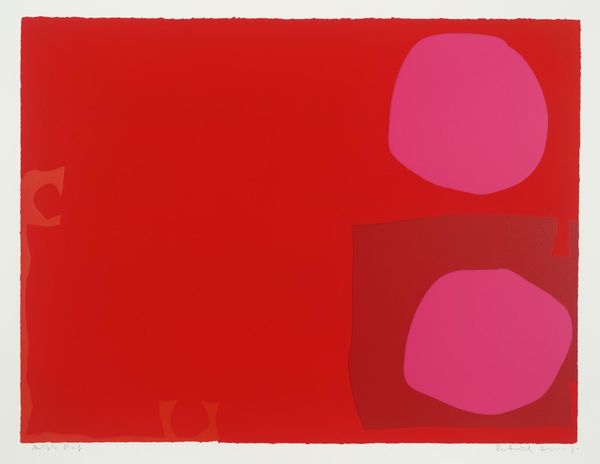
acrylic-paint, paper
#
printed
#
acrylic-paint
#
paper
#
rectangle
#
geometric
#
abstraction
#
modernism
#
orange
Copyright: John Hoyland,Fair Use
Curator: This striking artwork is titled "Blues, Reds," an acrylic on paper piece created by John Hoyland in 1969. Editor: My initial response is…bold. The stark, geometric shapes and those assertive colors evoke a sense of confident energy. It's almost confrontational, isn't it? Curator: Yes, I agree. Looking at Hoyland's broader practice during this period, we can contextualize this work within the broader dialogues concerning abstract expressionism and its discontents, specifically concerning questions of masculine authority in artistic practices and the gendered discourse that emerges alongside it. What can this mean if we see how abstraction had also become intertwined with ideas of freedom? Editor: Freedom, and yet there's a deliberate order imposed here. I'm drawn to the symbolism of the colours. Red, so often linked to passion and aggression; blue, traditionally associated with serenity, intelligence, or perhaps, sadness. Placed alongside one another, it feels almost like a tense dialogue between opposing forces. Even the narrow stripe between these shapes gives an uncomfortable link in the whole work. Curator: I appreciate your perspective on the dialogue between the colors. I see how this painting reflects and critiques ideas of power. The rectangular format speaks to mid-century aesthetic trends but also carries with it subtle implications about structures. It would not go far if we did not analyze how political, cultural, or even subjective conditions affected this period. Editor: And what about the darker block separating the shapes? Curator: One way we may contextualize the importance of it can be by looking at political issues regarding conflict and division at that moment. I wonder, did Hoyland anticipate and criticize the idea of this state? This invites consideration of Hoyland's broader engagement with the social tensions and anxieties present in 1969. Editor: Perhaps. For me, the appeal lies in the directness. The simplicity forces you to confront the raw power of color and form, prompting a visceral rather than purely intellectual response. Curator: It's a dance, then, between theory and the felt experience. Looking at “Blues, Reds” it seems Hoyland wanted viewers to challenge their presumptions. Editor: Ultimately, regardless of interpretation, this work is an aesthetic statement, demonstrating a confident era for change, even today.
Comments
No comments
Be the first to comment and join the conversation on the ultimate creative platform.

